This section gives you important advice on how to safely drive and correctly load your vehicle.
Safe driving tips
The following safe driving tips have been provided by drivers and instructors with many years’ experience in the heavy vehicle industry.
- Stay alert:
- be on the lookout for potential hazards all the time
- don’t just look straight ahead – keep your eyes moving. You should use your mirrors often enough to be aware of surrounding traffic.
- Keep fit:
- driving is a physical job, and it requires flexibility and fitness
- a fit driver gets tired less easily and copes with stress better
- have regular health checks and get plenty of sleep.
- Develop a positive attitude:
- being on the road a lot, you are likely to sometimes encounter inconsiderate and dangerous driving from others – don’t let it get to you, and brush it off.
- Be polite and courteous when you drive:
- remember, you are a representative not only of your company, but the whole ‘trucking’ industry.
Safe driving practices
Before you start
At the start of the day, always do a walk-around check of your vehicle. In particular, check:
- water, oil and fuel levels
- compressed air braking system
- tyres (check tread and inflation pressure)
- wheel nuts
- trailer coupling devices (including air hoses and wiring cables)
- mirrors (must be clean and set correctly)
- lights
- horn
- wipers
- windscreen (must be clean)
- vehicle licence label
- number plates and reflectors (must be clean)
- warrant of fitness (WoF) or certificate of fitness (CoF)
- road user charges (RUC) licence
- certificate of loading
- company documents
- logbook
- dangerous goods documentation/placarding, if required
- any damage that may have occurred on a previous trip
- load (must be secure).
Roadside inspection guidelines for heavy vehicles
Drive smoothly
To drive more efficiently:
- move smoothly through the gears
- avoid aggressive braking and gear changes
- drive so the vehicle is ‘cruising’ all the time – it will save on wear and tear, and you’ll have more attention to devote to what’s happening on the road around you.
Check your load
When checking your load, the most important thing to look for is load security. The driver is responsible for making sure that the load is secure and loaded correctly.
Truck loading code of practice section.
You should check that your load is secure after:
- each rest stop
- driving over uneven surfaces.
Brake correctly
When braking, never slam on the brakes – instead, apply pressure to the brakes gradually, increasing pressure as the vehicle slows.
When driving a curve:
- brake before entering the curve
- maintain a steady speed through the curve
- accelerate out of the curve (braking on a curve could cause you to lose control).
Safe loading
There are many laws you must follow when loading a heavy vehicle or driving a heavy vehicle that is carrying a load of any kind. You can be prosecuted for failing to follow the laws relating to vehicle loading, so it is important that you are familiar with them.
The truck loading code of practice section is a guide on how to comply with these laws. As a driver, you are strongly recommended to read this section.
Truck loading code of practice
Carrying dangerous goods
Dangerous goods are potentially life-threatening hazards, for both you, other road users and the environment. To carry dangerous goods, you will need a D endorsement on your licence, which will need to be renewed every five years.
D endorsements
Dangerous goods include substances and articles that have explosive, flammable, toxic, infectious or corrosive properties. They also include containers that have held dangerous goods. When driving a vehicle that is carrying dangerous goods, you must also:
- carry documents that identify the dangerous goods
- display the relevant placards on the vehicle (some of the placards are shown below)
- separate dangerous goods from other incompatible goods.
Refer to Land Transport Rule: Dangerous Goods 2005 for more information. There is a consolidated version of the Rule that includes all the amendments available.
Consolidated version of Land Transport Rule: Dangerous Goods 2005(external link)
Examples of dangerous goods placards
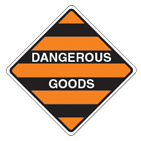 Dangerous goods
Dangerous goods
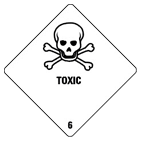 Toxic substances
Toxic substances
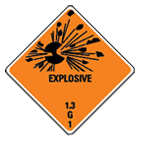 Explosives
Explosives
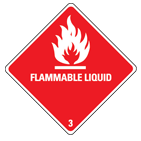 Flammable liquid
Flammable liquid
 Oxidising agent
Oxidising agent
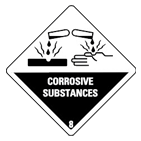 Corrosive substances
Corrosive substances
 Dangerous goods
Dangerous goods Toxic substances
Toxic substances Explosives
Explosives Flammable liquid
Flammable liquid Oxidising agent
Oxidising agent Corrosive substances
Corrosive substances